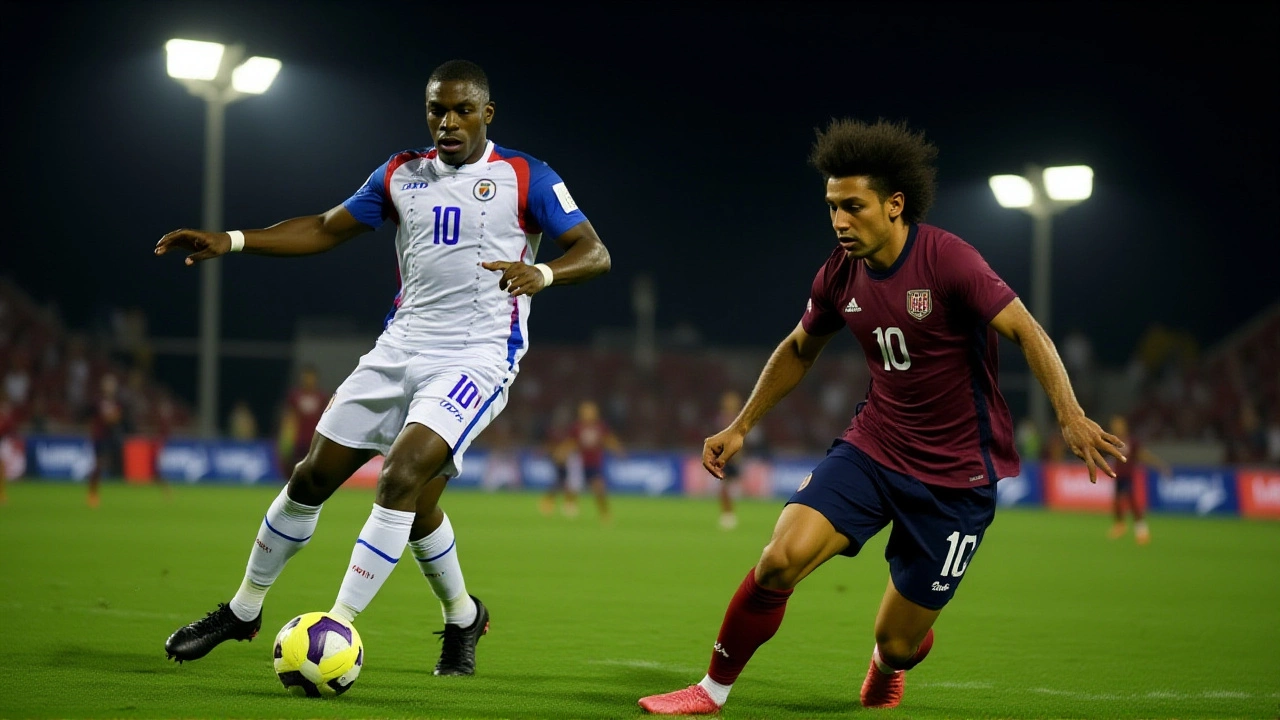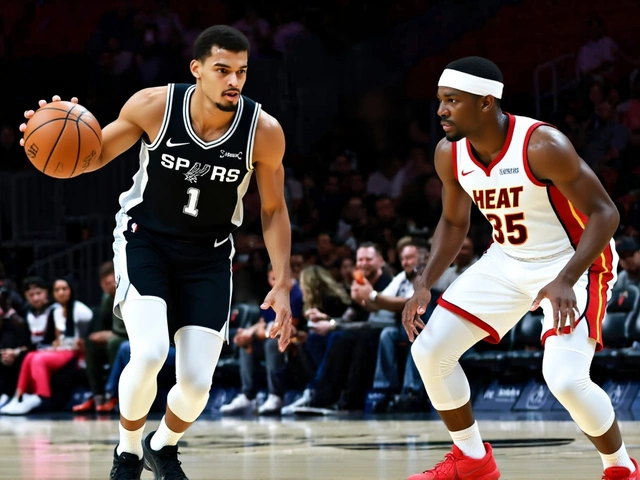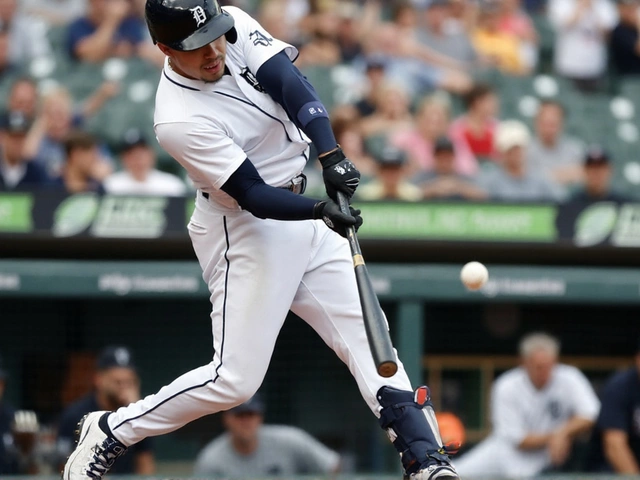Haiti Qualifies for World Cup for First Time Since 1974 With 1-0 Win Over Costa Rica

On November 13, 2025, in a rain-slicked stadium in Willemstad, Haiti did the impossible. A 44th-minute tap-in by Frantzdy Pierrot, assisted by Ruben Providence and Josue Casimir, sealed a 1-0 victory over Costa Rica at Estadio Ergilio Hato. The win didn’t just move Haiti up in the standings—it sent them to the 2026 FIFA World Cup for the first time in 52 years. No one saw this coming. Not in Haiti, not in San José, not even in the most optimistic fan club. And now, the Ticos are out. The players didn’t just celebrate—they wept. Fans in the stands danced on benches, waving flags soaked in sweat and rain, while the team ran straight to the barrier, arms raised, jumping like kids on Christmas morning.
A Nation Playing on Borrowed Ground
Haiti hasn’t hosted a World Cup qualifier at home since 2019. The chaos in Port-au-Prince—gang violence, political collapse, humanitarian crisis—made it impossible. So they turned to Curacao, a tiny island in the southern Caribbean, whose Estadio Ergilio Hato became their sanctuary. It’s not home. But it’s safe. And on this night, it became holy ground. The Haitian squad, mostly playing in Europe and North America, arrived with no fanfare, no parade, no national TV broadcast back home. But in the stands, over 12,000 Haitians—many wearing hand-sewn jerseys, others holding photos of relatives left behind—screamed like their lives depended on it. And maybe they did.The Goal That Changed Everything
It came in the 44th minute. Josue Casimir drove down the left flank, drew two defenders, and slipped a pass to Ruben Providence, who cut inside. No one marked Frantzdy Pierrot—he’d drifted to the far post like a shadow. One touch. One tap. Past Keylor Navas, the veteran goalkeeper who’s played in three World Cups, won three Champions Leagues, and now, at 38, watched his last shot at a fourth vanish. The stadium exploded. The goal wasn’t flashy. It was perfect. And it was everything.Placide’s Miracle
The second half was a siege. Costa Rica threw everything at Haiti—62% possession, 18 shots, six on target. But Johny Placide, Haiti’s 32-year-old goalkeeper who plays in Cyprus, was otherworldly. He blocked a close-range header from K. Vargas. He palmed away a curling free kick from M. Ugalde. He even punched away a volley from the edge of the box with 87 minutes on the clock. When the final whistle blew, he collapsed to his knees, arms outstretched, as if he’d just saved his country. The stats don’t lie: 8 saves, 3 of them top-drawer. This wasn’t luck. This was destiny.
Costa Rica’s Collapse
Costa Rica entered the final matchday needing only a draw against Honduras to stay alive. Instead, they got a 0-0 stalemate on November 19, 2025, in San José. The crowd stayed silent. The players looked numb. Manager Miguel Herrera, who led Mexico to the 2014 World Cup quarterfinals, now faces a reckoning. His team lost to Jamaica, drew with Nicaragua, and couldn’t break down a Honduras side that had already been eliminated. The failure wasn’t just tactical—it was emotional. Haiti, a nation with no proper stadiums, no funding, no security, played with more heart than a country that’s hosted two World Cups and boasts a $300 million football federation. The question now isn’t just whether Herrera stays—it’s whether Costa Rica’s football culture can survive this.What This Means for Haiti
Haiti’s last World Cup appearance was in 1974, when they lost all three games in West Germany. Back then, they had a handful of professionals. Now, they have a team built on resilience. Six players were born outside Haiti. Two play in MLS. Three in France’s lower divisions. But they all answered the call. The victory didn’t just qualify them for Qatar 2026—it gave a broken nation something it hasn’t had in decades: hope. In the streets of Port-au-Prince, even amid gunfire, people turned on radios. In Miami, in Montreal, in Paris, Haitian families gathered, crying as they watched their team hug each other on a foreign pitch. This wasn’t just football. It was a national resurrection.
What’s Next?
Haiti will be placed in a group with likely powerhouses—possibly Spain, Brazil, or Germany. They won’t be favorites. But they’ll be dangerous. Their defense, anchored by Placide and center-back Lacroix, is organized. Their midfield, led by Jean Jacques, is relentless. And Pierrot? He’s now a national icon. The federation has already announced a $5 million development fund for youth academies in Haiti’s provinces. FIFA is sending technical staff to help rebuild infrastructure. And for the first time in half a century, Haitian children are dreaming not of escape—but of playing on the world’s biggest stage.Frequently Asked Questions
How did Haiti qualify for the 2026 World Cup despite playing all home games abroad?
Haiti was forced to play all its home qualifiers at Estadio Ergilio Hato in Curacao due to violent instability in Haiti. Despite the lack of home support, they earned 8 points in Group C with two wins, two draws, and one loss. Their 1-0 win over Costa Rica, combined with Honduras’ win over Nicaragua and Costa Rica’s 0-0 draw with Honduras, gave Haiti the second automatic qualifying spot based on goal difference.
Who scored Haiti’s goal, and how did it happen?
The decisive goal was scored by Frantzdy Pierrot in the 44th minute. Josue Casimir delivered a pass to Ruben Providence, who cut inside and laid off a low cross to Pierrot, unmarked at the far post. He tapped it past veteran goalkeeper Keylor Navas. It was Haiti’s only shot on target in the match.
Why was Keylor Navas’ performance significant in this match?
Navas, a three-time Champions League winner and former Real Madrid starter, was Costa Rica’s last hope. He made seven saves during the match and kept his team alive for 80 minutes. But his inability to stop Pierrot’s goal and the team’s failure to convert chances in the second half exposed deeper issues—lack of creativity and poor final-third execution. His performance, while heroic, couldn’t mask the fact that Costa Rica’s attack had been stagnant for months.
What impact does Haiti’s qualification have on Caribbean football?
Haiti’s qualification is the first time since Jamaica in 2015 that a Caribbean nation has reached the World Cup without going through a playoff. It proves that small nations with limited resources can compete at the highest level with organization, grit, and smart recruitment. It also puts pressure on CONCACAF to invest more in grassroots programs across the region, especially in Haiti, which has been historically underfunded despite its rich football history.
How does Haiti’s 2026 World Cup qualification compare to their 1974 appearance?
In 1974, Haiti’s squad was mostly local players with little international experience. They lost all three group matches, conceding 11 goals. In 2026, they’re a globally connected team with players from France, the U.S., and Cyprus. Their defense is disciplined, their midfield is hard-working, and they’ve shown tactical discipline under coach Jocelyn Angloma. This time, they’re not just participants—they’re contenders.
What’s next for Haiti’s football federation?
The Haitian Football Federation has pledged to use World Cup revenue to rebuild infrastructure, including a new training center in Cap-Haïtien and youth academies in seven provinces. FIFA has already committed $2.3 million in development funding. The government, for the first time in years, has pledged matching funds. The dream now isn’t just to play in the World Cup—it’s to make Haiti a football nation again.
- November 20, 2025
- Maddox Landry
- 0 Comments
- Permalink





Write a comment